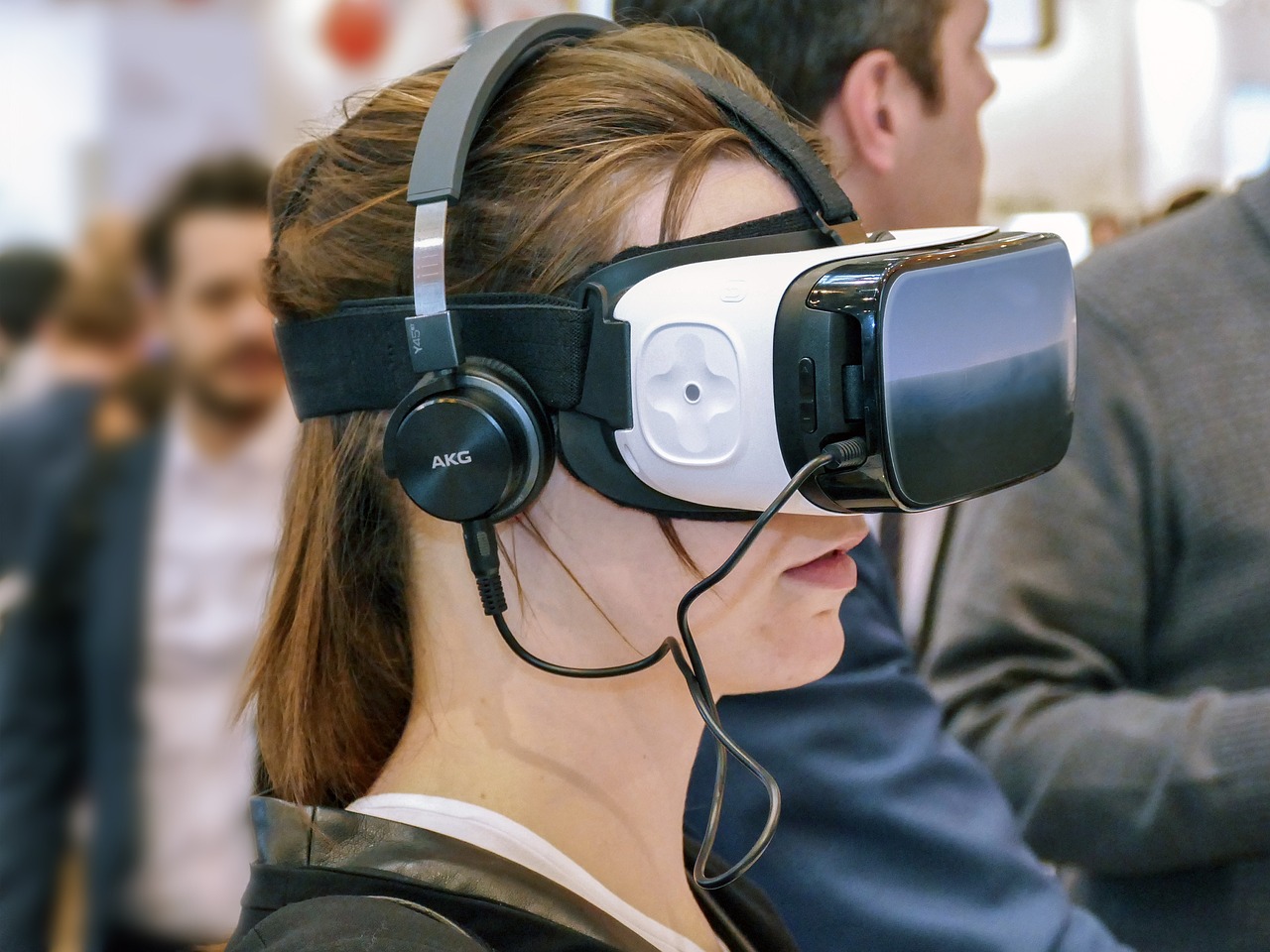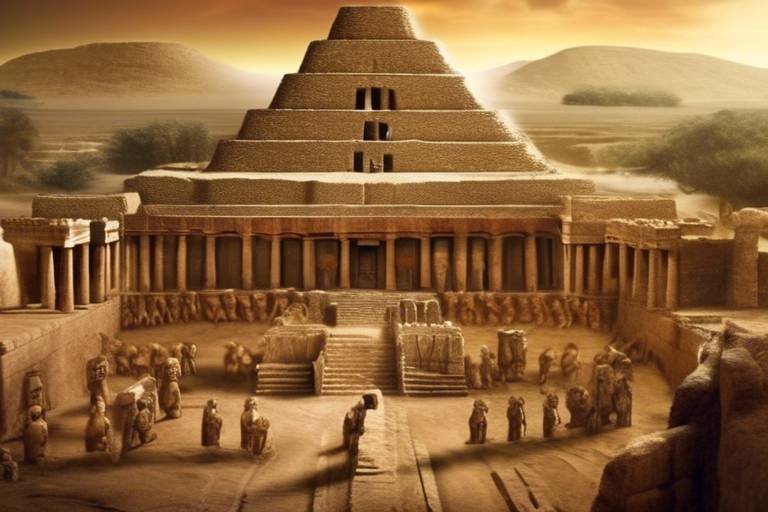The Role of Technology in Heritage Research
Technology plays a crucial role in heritage research, revolutionizing the way we explore, preserve, and understand our cultural past. Through the advancements in digital tools and applications, researchers and enthusiasts can delve deeper into history, uncovering hidden treasures and unraveling the mysteries of ancient civilizations.
One of the key aspects of technology in heritage research is the utilization of digital preservation techniques. By digitizing cultural artifacts, monuments, and historical sites, we ensure that these treasures are preserved for future generations. Advanced technologies enable us to create digital archives that can be accessed and studied by researchers worldwide, breaking the barriers of time and space.
Virtual reality applications have transformed the way we experience heritage sites. Through immersive VR experiences, users can step back in time and explore ancient civilizations in a digital environment. This technology offers a new dimension to heritage research, allowing for interactive and engaging experiences that bring history to life.
Augmented reality enhancements have also made significant contributions to heritage research. By overlaying informative digital content on physical artifacts and historical locations, AR technology provides users with a deeper understanding of the significance and context of these cultural treasures. It bridges the gap between the past and the present, enriching the visitor experience.
3D scanning and printing technologies have opened up new possibilities in heritage research. By creating accurate replicas of artifacts and structures, researchers can analyze and display these treasures in ways that were previously unimaginable. 3D technology allows us to study intricate details and preserve fragile objects with precision.
Geographic Information Systems (GIS) play a vital role in mapping and analyzing spatial data related to cultural heritage sites. By visualizing the landscape and historical context of these locations, GIS technology helps researchers gain insights into the significance and preservation needs of these sites. It provides a comprehensive view of the cultural landscape, guiding conservation efforts.
Artificial intelligence is transforming artifact classification in heritage research. By automating the categorization and analysis of artifacts based on patterns and historical context, AI technology accelerates the research process. It helps researchers identify connections and trends that may have been overlooked, enhancing our understanding of the past.
Mobile applications have become valuable tools for heritage interpretation. By providing users with interactive guides, historical information, and immersive experiences at heritage sites, these apps enhance the visitor experience. Through smartphones and tablets, users can engage with history in a dynamic and personalized way.
Crowdsourcing cultural heritage data has emerged as a powerful tool in heritage research. By engaging the public in contributing information, images, and data, researchers can enrich their understanding of cultural heritage. Crowdsourcing fosters a sense of community involvement and collective responsibility towards preserving our shared history.
While technology offers numerous benefits to heritage research, it also presents challenges and ethical considerations. Issues such as data privacy, cultural sensitivity, and authenticity must be carefully navigated to ensure that technology is used responsibly and respectfully in the preservation and interpretation of our cultural heritage.

Digital Preservation Techniques
Technology plays a pivotal role in heritage research, unlocking new possibilities for preserving and exploring cultural artifacts, monuments, and historical sites. In this article, we delve into various technological advancements that are reshaping the way we study and interact with our rich heritage.
When it comes to digital preservation techniques, the focus is on utilizing advanced technologies to digitize and safeguard cultural treasures for future generations. Through methods such as high-resolution imaging, laser scanning, and data modeling, experts can create digital replicas of artifacts and historical sites with remarkable accuracy. These digital archives not only ensure the preservation of our heritage but also make it accessible for research, education, and public engagement.
One of the key benefits of digital preservation is the ability to capture intricate details of artifacts that may be deteriorating or at risk of damage. By creating digital surrogates, researchers can study these objects in minute detail without causing any harm to the originals. Moreover, digital preservation allows for the dissemination of cultural heritage on a global scale, breaking down physical barriers and reaching a wider audience.
Through the use of metadata standards and digital repositories, organizations can organize and manage vast collections of digital heritage data efficiently. This structured approach not only facilitates research and analysis but also ensures the long-term sustainability of digital archives. Additionally, digital preservation techniques enable the integration of multimedia elements such as videos, interactive models, and virtual tours, enhancing the overall user experience and engagement with cultural heritage.
In essence, digital preservation techniques serve as a bridge between the past and the future, preserving our cultural legacy in a digital realm that transcends time and space.

Virtual Reality Applications
Virtual reality has emerged as a groundbreaking tool in the realm of heritage research, offering a unique and immersive way to explore ancient sites and artifacts. By donning a VR headset, users can transport themselves to distant historical locations and experience the past in a way never before possible. Imagine walking through the grand halls of an ancient temple or inspecting intricate details of a centuries-old artifact, all from the comfort of your own home.
Through virtual reality applications, researchers and enthusiasts alike can delve into the depths of history, gaining a deeper understanding of cultural heritage without the constraints of physical boundaries. These digital experiences not only bring the past to life but also open up new avenues for education, preservation, and interpretation of our shared heritage.
Moreover, virtual reality technology allows for the creation of interactive experiences that cater to different learning styles and preferences. Whether you are a visual learner who thrives on immersive visuals or a kinesthetic learner who benefits from hands-on exploration, VR applications offer a versatile platform for engaging with heritage in a meaningful way.
Furthermore, virtual reality applications play a crucial role in democratizing access to cultural heritage, making it possible for individuals from all corners of the globe to engage with historical sites and artifacts that may otherwise be out of reach. By breaking down geographical barriers and offering inclusive experiences, VR technology has the power to unite people through a shared appreciation for our collective past.
In essence, virtual reality applications are not just tools for exploration; they are gateways to a world where the past and present converge, allowing us to connect with history in a dynamic and transformative manner.

Augmented Reality Enhancements
Technology plays a pivotal role in heritage research, revolutionizing the way we explore and preserve cultural artifacts, monuments, and historical sites. Through advanced digital tools and innovative techniques, researchers are able to unlock the mysteries of the past and make them accessible to future generations.
Augmented reality (AR) has emerged as a powerful tool in heritage research, offering interactive and informative overlays on physical artifacts and historical locations. By superimposing digital information onto the real world, AR enhances our understanding of the past and provides immersive experiences for users.
Imagine walking through the ruins of an ancient civilization and using your smartphone to see virtual reconstructions of how the site may have looked centuries ago. With AR, users can visualize historical events, explore architectural details, and interact with virtual objects in real-time, creating a dynamic and engaging experience.
Furthermore, AR allows researchers to present information in a visually compelling way, making complex historical data more accessible and engaging for audiences. By blending the virtual and physical worlds, AR enhances the storytelling of cultural heritage, bringing history to life in a way that traditional methods cannot.
Moreover, AR technology enables users to engage with heritage sites remotely, breaking down geographical barriers and allowing individuals from around the world to experience and appreciate cultural treasures without being physically present. This democratization of heritage access fosters a sense of global connectedness and encourages cultural exchange and understanding.
Overall, augmented reality enhancements in heritage research open up new possibilities for exploration, education, and preservation, bridging the gap between the past and the present in a visually captivating and interactive manner.

3D Scanning and Printing
Technology plays a crucial role in heritage research, enabling the preservation, exploration, and understanding of cultural artifacts and historical sites for present and future generations. In this article, we will delve into various technological advancements that are revolutionizing the field of heritage research.
3D scanning and printing technologies have transformed the way cultural artifacts and structures are studied and preserved. By capturing detailed three-dimensional images of objects, 3D scanning allows researchers to create accurate digital replicas with intricate details. These digital replicas can be further utilized for analysis, conservation, and even public display.
Moreover, 3D printing has opened up new possibilities in heritage research by enabling the physical reproduction of artifacts and structures. Researchers can now create exact replicas of ancient artifacts, architectural elements, and even entire historical sites using 3D printing technology. This not only aids in preservation efforts but also provides researchers and the public with tangible representations of heritage objects that were previously inaccessible.
One of the key advantages of 3D scanning and printing is the ability to capture and replicate fragile or deteriorating artifacts without risking damage to the originals. This technology allows researchers to study and share valuable cultural heritage items in ways that were previously unimaginable, bringing history to life in a tangible and interactive manner.

GIS Mapping and Analysis
Geographic Information Systems (GIS) play a crucial role in heritage research by providing advanced mapping and analytical tools to study cultural sites and landscapes. Through GIS technology, researchers can create detailed maps that visualize the spatial data associated with heritage sites, allowing for in-depth analysis and interpretation. By overlaying different layers of information, such as historical records, archaeological findings, and geographical features, GIS enables a comprehensive understanding of the context surrounding cultural artifacts and monuments.

Artificial Intelligence in Artifact Classification
Artificial intelligence (AI) plays a pivotal role in artifact classification within the realm of heritage research. By harnessing the power of machine learning algorithms, AI systems can swiftly analyze vast amounts of data to identify patterns and categorize artifacts based on historical context. This technology enables researchers to automate the classification process, significantly reducing the time and effort required for cataloging and organizing cultural objects.
Imagine a digital curator tirelessly sifting through a virtual library of artifacts, swiftly sorting and categorizing each item with remarkable accuracy. AI serves as this virtual curator, utilizing advanced algorithms to recognize intricate details, styles, and characteristics of artifacts, thereby assisting researchers in creating comprehensive databases and catalogs.
Moreover, AI in artifact classification extends beyond mere categorization. These intelligent systems can detect anomalies, similarities, and trends within artifact collections, offering valuable insights into cultural evolution, trade routes, and societal interactions. By uncovering hidden connections and correlations, AI enhances our understanding of the past and sheds light on previously undiscovered narratives.
Through the integration of AI in artifact classification, heritage researchers can unlock new dimensions of analysis and interpretation, transcending traditional methods of study. The marriage of technology and archaeology propels us into a future where the secrets of the past are unveiled through the lens of artificial intelligence, revolutionizing the way we explore and preserve our cultural heritage.

Mobile Applications for Heritage Interpretation
Mobile applications have become essential tools for enhancing the interpretation of heritage sites and artifacts, providing users with interactive and engaging experiences. These apps serve as virtual guides, offering historical information, interactive maps, and immersive features that bring the past to life through smartphones and tablets. By leveraging the capabilities of mobile technology, users can explore heritage sites in a dynamic and informative way, gaining a deeper understanding of their significance and historical context.

Crowdsourcing Cultural Heritage Data
Technology has significantly transformed the landscape of heritage research, offering innovative solutions to digitize, preserve, and explore cultural artifacts, monuments, and historical sites. In this article, we delve into various technological advancements that are shaping the way we study and interpret our rich cultural heritage.
One of the most intriguing developments in heritage research is the concept of crowdsourcing, where the collective intelligence of the public is harnessed to gather, curate, and share cultural heritage data. Through online platforms and mobile applications, individuals from around the world can contribute valuable information, images, and insights that enrich our understanding of historical sites and artifacts.
Crowdsourcing not only facilitates the sharing of diverse perspectives and knowledge but also fosters a sense of community engagement and ownership in preserving our shared heritage. By involving the public in the documentation and interpretation of cultural assets, researchers can access a wealth of data that may have been previously inaccessible, leading to new discoveries and narratives.
Furthermore, crowdsourcing cultural heritage data can help bridge gaps in information, especially for sites that are under-documented or at risk of being lost due to various factors. By leveraging the power of collective efforts, researchers can create comprehensive databases, virtual reconstructions, and interactive experiences that enhance the accessibility and appreciation of our cultural legacy.

Challenges and Ethical Considerations
When delving into the realm of technology in heritage research, it's crucial to acknowledge the myriad challenges and ethical considerations that come hand in hand with these advancements. One of the primary challenges is the issue of data privacy. As digital preservation techniques and virtual reality applications collect vast amounts of data on cultural artifacts and historical sites, ensuring the security and confidentiality of this information becomes paramount. How can we balance the accessibility of digitized heritage with the protection of sensitive data?
Moreover, cultural sensitivity poses another significant challenge. As technology allows for the widespread dissemination of cultural heritage materials, it's essential to navigate the fine line between sharing knowledge and respecting the sacredness and significance of certain artifacts to specific communities. How can we ensure that the digitization and dissemination of cultural heritage are done in a respectful and culturally sensitive manner?
Authenticity is also a key ethical consideration in heritage research. With the rise of 3D scanning and printing technologies enabling the creation of replicas, questions arise about the authenticity and originality of these digital reproductions. How do we preserve the integrity and uniqueness of cultural artifacts while still leveraging technology for research and educational purposes?
Furthermore, the democratization of heritage through crowdsourcing cultural heritage data raises ethical dilemmas. While engaging the public in contributing information and images can enrich our understanding of cultural heritage, how do we ensure the accuracy and reliability of user-generated content? How can we address issues of misinformation and bias that may arise from crowdsourced data?
In navigating these challenges and ethical considerations, it is imperative for researchers, technology developers, and heritage professionals to collaborate closely, incorporating diverse perspectives and expertise to ensure that the integration of technology in heritage research is done thoughtfully and responsibly.
Frequently Asked Questions
- What is the significance of technology in heritage research?
Technology plays a crucial role in heritage research by enabling the preservation, exploration, and analysis of cultural artifacts and historical sites through innovative digital tools and techniques.
- How does virtual reality contribute to heritage research?
Virtual reality enhances heritage research by providing immersive experiences that allow users to virtually visit ancient sites, interact with artifacts, and gain a deeper understanding of historical contexts.
- What are the benefits of using augmented reality in heritage research?
Augmented reality enhances heritage research by overlaying interactive information on physical artifacts and locations, offering users a unique and informative way to engage with cultural heritage.
- How does 3D scanning and printing technology benefit heritage research?
3D scanning and printing technologies enable the creation of accurate replicas of artifacts and structures, facilitating detailed analysis, preservation, and accessibility of heritage objects for research and public education.
- What role does artificial intelligence play in artifact classification?
Artificial intelligence automates the classification and analysis of artifacts based on historical context and patterns, streamlining the research process and providing valuable insights into cultural heritage collections.
- How do mobile applications contribute to heritage interpretation?
Mobile applications offer interactive guides, historical information, and immersive experiences at heritage sites, enhancing visitor engagement and providing educational opportunities through smartphones and tablets.
- What are the ethical considerations associated with technology in heritage research?
Ethical considerations include issues of data privacy, cultural sensitivity, and authenticity, highlighting the importance of balancing technological advancements with respect for cultural heritage and community values.



















